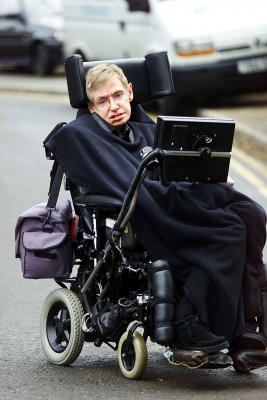
Hawking had a rare early-onset, slow-progressing form of motor neurone disease (MND; also known as amyotrophic lateral sclerosis (ALS) or Lou Gehrig’s disease), a fatal neurodegenerative disease that affects the motor neurones in the brain and spinal cord, which gradually paralysed him over decades.
Hawking had experienced increasing clumsiness during his final year at Oxford, including a fall on some stairs and difficulties when rowing. The problems worsened, and his speech became slightly slurred. His family noticed the changes when he returned home for Christmas, and medical investigations were begun. The MND diagnosis came when Hawking was 21, in 1963. At the time, doctors gave him a life expectancy of two years.
When Hawking first began using a wheelchair in the late 1970s he was using standard motorised models. The earliest surviving example of these chairs was made by BEC Mobility and sold by Christie’s in November 2018 for £296,750. Hawking continued to use this type of chair until the early 1990s, at which time his ability to use his hands to drive a wheelchair deteriorated. Hawking used a variety of different chairs from that time, including a DragonMobility Dragon elevating powerchair from 2007, as shown in the April 2008 photo of Hawking attending NASA’s 50th anniversary; a Permobil C350 from 2014; and then a Permobil F3 from 2016.
Hawking’s speech deteriorated, and by the late 1970s he could be understood by only his family and closest friends. To communicate with others, someone who knew him well would interpret his speech into intelligible speech. Spurred by a dispute with the university over who would pay for the ramp needed for him to enter his workplace, Hawking and his wife campaigned for improved access and support for those with disabilities in Cambridge, including adapted student housing at the university. In general, Hawking had ambivalent feelings about his role as a disability rights champion: while wanting to help others, he also sought to detach himself from his illness and its challenges. His lack of engagement in this area led to some criticism.
Picture Credit : Google




